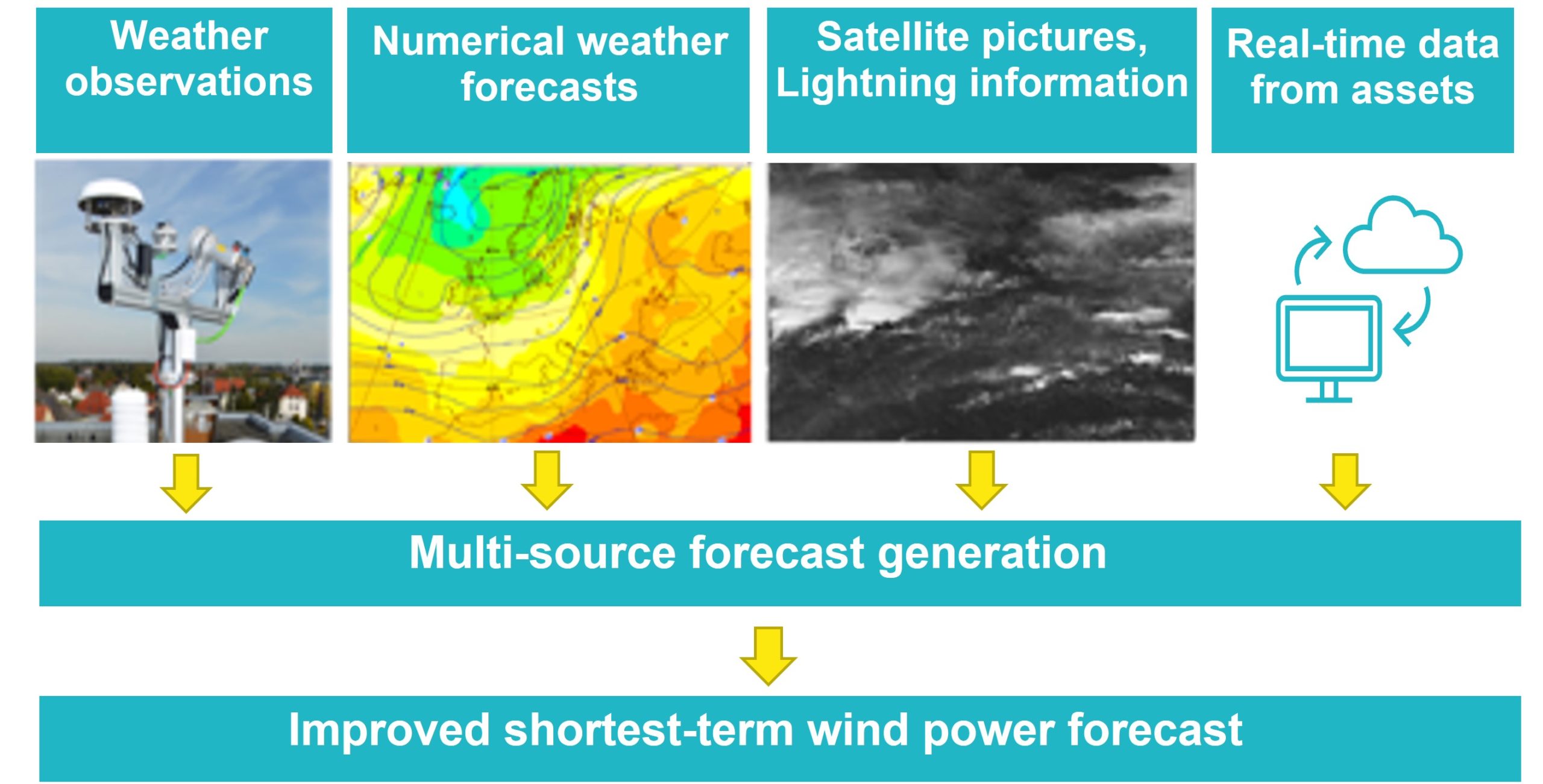Multi-Source Data for Smart Wind Power Forecasting
Multi-source data approach to short-term wind power forecasting
Partner: EMSYS
Actors involved: RES operators, Aggregators
Context |
The short-term forecast is very important to the actors in the energy system. While large amounts of real-time data from different sources are available, it is still very challenging to exploit this information for better forecasting results. Indeed, when forecast is offered as a service, rapid changes in the local weather conditions, outages or constraints in the machine’s availability have to be robustly addressed by the forecasting process in real-time.
Summary |
This use case aims at improving wind power forecasts of individual sites and portfolios in the time range 1‑30 min ahead by using multiple data sources (such as measurement data, satellite images, radar images, lightning detection) and data science methodologies.
The idea is to make the method choose an appropriate and situation-based reaction under the current production level, machine state and weather conditions based on pure data analysis.
The exploitation of multiple data sources is the key to further enhance and improve the forecasting capabilities in the practice of forecast as a service.
Challenge |
How to improve wind power forecasts of individual sites and portfolios by using vast amounts of real-time information?

Approach |
Using multiple data sources and data science methods to exploit in real time the information contained on multiple data sources with various formats and spatio-temporal scales using methods based on artificial intelligence considering the chaotic nature of the weather. A large variety of such data sources is already available to assess the current weather conditions or the machine status in real-time. The approach here is to select the right additional data sources that are useful in specific weather events to get a better forecasting result in the shortest-term, e.g. to use lightning data in the case where local thunderstorms are impacting the power output of wind farms in an area.

Improved wind power forecasts for the shortest-term time frame contribute to better integration of wind energy into energy markets and grid operation. Better use of real-time data from wind farms, weather observations and rapidly updated NWP models.
Innovative content of forecasting solution
The innovations in this use case are: new methods in short-term forecasting of wind power, explicit consideration of multiple data sources from assets, weather observations and NWP forecasting.
| KPI | Forecast improvement relative to existing solutions |
